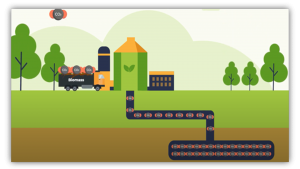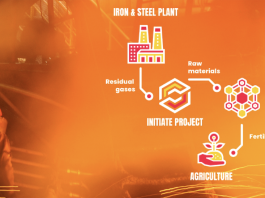Clara Puig de Torres-Solanot, Junior Communications Officer at Bioenergy Europe, draws attention to the role of bioenergy with carbon capture and storage in the efforts against global warming.
On 3 July 2023, the average global temperature reached 17.01°C. This was the hottest day ever recorded globally according to data from the US National Centres for Environmental Prediction, and another wakeup call that we need to accelerate the green transition to fight climate change.
In line with the 2015 Paris Agreement’s carbon budget, the European Union has committed to ambitious environmental targets, including sharply slashing greenhouse gas emissions and reaching climate neutrality by 2050.
Worryingly though, the Intergovernmental Panel on Climate Change (IPCC), states that it is very unlikely to reduce global warming to 1.5°C unless we cut greenhouse gas (GHG) emissions drastically in the coming decades. There will still be unavoidable emissions from sectors such as aviation, maritime transport, cement, steel, and lime, for which carbon dioxide removals will need to compensate.
The IPCC report clearly states that: “The deployment of carbon dioxide removals to counterbalance hard-to-abate residual emissions is unavoidable if net-zero carbon dioxide or GHG emissions are to be achieved.”
What are carbon dioxide removals?
Carbon dioxide (CO2) removals consist of capturing atmospheric carbon and storing it, either temporarily or permanently, to effectively reduce the overall concentration of CO2 in the atmosphere. Together with emission reductions, these removals allow us to restore the CO2 levels to safe and healthy volumes. Some examples of carbon removal activities include:
- Carbon farming, where carbon can be naturally stored on land through activities that enhance carbon capture in soils and forests, and/or reduce carbon release from soils;
- Enhanced weathering, where silicate rocks are broken down so they can react with atmospheric CO2 and form new minerals;
- Direct air carbon capture and storage (DACCS) where CO2 is sucked out of the air; and
- Bioenergy with carbon capture and storage (BECCS) which prevents the carbon captured in biomass from being released into the atmosphere.

The road to negative emissions
This wide array of removal technologies will be advantageous in reaching the European Union’s (EU) climate and energy goals, but the BECCS method in particular should be highlighted. This is because it is the only carbon dioxide removal technology that also produces energy. Bioenergy refers to any energy derived from the conversion of biomass – the natural, biological sources that are available on a renewable basis, such as residues from plants, agricultural feedstocks, algae, or organic wastes – into energy.
When done sustainably, transforming biomass into energy does not increase net levels of CO2 in the atmosphere and can play a fundamental role in the energy transition. It is a carbon-neutral form of energy which inserts itself in the natural growth and decay cycle, producing energy rather than allowing the natural decay of biomass. The process also ensures that new trees and crops are planted, guaranteeing that the amount of carbon stored in the environment remains stable or even increases.
BECCS uses sustainably harvested biomass residues, as well as waste and by-products from forest and agro-industries, to generate dispatchable, renewable energy. With BECCS, the CO2 produced when transforming biomass into energy is captured in the exhaust gases, which are turned into a liquid and can be pumped deep into the bedrock.
There, it is permanently stored and mineralised over time, preventing it from contributing to climate change. By preventing the release of CO2 trapped in biomass, BECCS is more than carbon neutral, it is a carbon-negative form of energy production.
BECCS needs support to unleash its full potential
BECCS is one of the most cost-competitive technologies for negative carbon dioxide emissions. However, despite its efficacy, the costs associated with implementation of this technology are still considerably higher than the production of bioenergy without BECCS. To enable the deployment of BECCS on a large scale, there must be a functioning market or framework for carbon removals and this will require new economic instruments.
To promote sustainable solutions, innovative carbon capture and storage technologies, including BECCS, the European Commission presented a proposal for the first EU-wide voluntary framework for the certification of carbon removals, the Carbon Removal Certification Framework (CRCF). The proposal sets out criteria to define high-quality carbon removals and establishes processes for monitoring, reporting, and verifying the authenticity of these removals.
By creating a robust system that builds trust, this certification framework will facilitate the private funding of carbon removal activities across the EU and transition BECCS from exploratory projects to full-scale industrial deployment. In parallel with public funding, voluntary carbon markets are expected to play a greater role in the business case for BECCS projects in the future.
Currently, the global carbon removal market is dominated by avoided emissions and carbon farming projects, but there is an increasing amount of capital being earmarked for the development of BECCS projects.
Putting BECCS into action
As part of its research and development activities, a Swedish member of Bioenergy Europe, Stockholm Exergi, is working on how BECCS can make a substantive contribution to supporting national and international climate goals. The company’s work with BECCS began in 2016 and in 2019 it established a research facility.
Backed by the research facility’s successful results, development of the full-scale facility has gradually gained momentum and, in April 2022, the EU Innovation Fund took the decision to grant Stockholm Exergi €180m for the development of Europe’s first large-scale negative emissions plant.

Pending approval of their environmental permit application, Stockholm Exergi intends to make an investment decision during the first quarter of 2024. The company is planning a facility capable of capturing 800,000 tons of carbon dioxide per year by 2026 at Värtaverket in Stockholm. Stockholm Exergi is also not alone, with BECCS gaining recognition as a key solution, and several other large-scale projects are being planned and built across Europe.
BECCS is key to fight the energy and climate crises
Carbon removals generated by BECCS will be key to reach net zero and will be necessary to take us back down to healthy levels of CO2 in the atmosphere. BECCS delivers high-quality carbon removals at a reasonable price while also supporting energy security, but the current market needs to be reformed for its carbon removals to be appropriately valued. An effective CRCF is the first step towards providing the support that BECCS and other carbon removals need.
Ennio Prizzi, Policy Officer at Bioenergy Europe, said: “In the current energy and climate crisis and economic climate, it is vital that new projects such as BECCS provide cost-effective solutions that not only support energy security, but also deliver on net zero targets.

“For this, the EU should set up a proper framework for BECCS that should be reflected in the CRCF but also in the Net-Zero Industry Act (NZIA) where the role of carbon dioxide removals technologies and bioenergy must be recognised alongside other strategic net-zero technologies.
“We can’t afford to sit on the sidelines while the Earth’s future is at stake, it is time to act. It is time to secure a liveable future on our planet; it is time to bet on BECCS.”
Bioenergy Europe is the voice of European bioenergy. It aims to develop a sustainable bioenergy market based on fair business conditions. Founded in 1990, Bioenergy Europe is a non-profit, Brussels-based international organisation bringing together 40 associations and 157 companies, as well as academia and research institutes from across Europe.
Please note, this article will also appear in the fifteenth edition of our quarterly publication.









